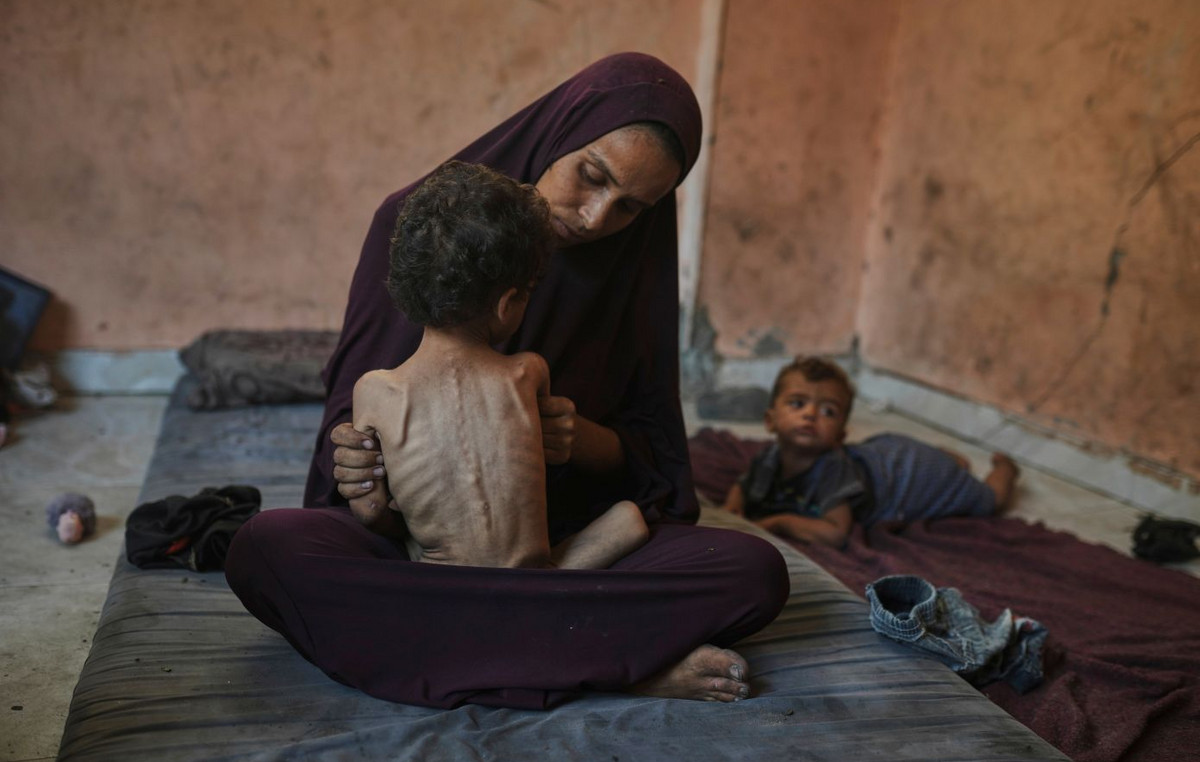To the Children in Brazil are getting taller and more obese according to a new study published in The Lancet Regional Health – Americas. The research was conducted by researchers from Cidacs/Fiocruz Bahia (Center for Data Integration and Knowledge for Health of the Oswaldo Cruz Foundation), in collaboration with UFMG (Federal University of Minas Gerais) and the University College London.
According to the data, between 2001 and 2014 a 1 cm increase in child height trajectory . The prevalence of overweight and obesity also showed a significant increase among the data analyzed.
“These results indicate that Brazil, like all countries in the world, is far from reaching the goal of [Organização Mundial da Saúde] WHO to 'stop the increase' in the prevalence of obesity by 2030”, explains Carolina Vieira, researcher associated with Cidacs/Fiocruz Bahia and leader of the investigation.
The research was carried out by observing measurements of more than five million Brazilian children . The team used the database formed by linking three administrative systems: CadÚnico (Single Registry for Social Programs of the Federal Government), Sinasc (Live Birth Information System) and Sisvan (Food and Nutrition Surveillance System).
In total, data from 5,750,214 children were analyzed, from 3 to 10 years which were divided into two cohorts: those born between 2001 and 2007, and those born between 2008 and 2014. The differences between the declared sexes were also taken into account, that is, an average trajectory of BMI (Body Mass Index) was estimated. ) and height for girls, and another for boys.
The research found an increase in the average height trajectory of the 2008-2014 cohort of approximately 1 cm in both sexes, compared to the 2001-2007 cohort. Regarding the average BMI, there was an increase of 0.06 kg/m² among boys and 0.04 kg/m² among girls, for both cohorts.
When comparing the two groups, the prevalence of overweight for the age group of 5 to 10 years increased by 3.2% among boys and 2.7% among girls. In the case of obesity, the increase in prevalence went from 11.1% to 13.8% among boys and from 9.1% to 11.2% among girls (an increase of 2.7% and 2.1% , respectively).
The same happened for the 3 and 4 year old age group. There was an increase in overweight by 0.9% among boys and 0.8% among girls. Regarding obesity, there was an increase from 4% to 4.5% in boys and from 3.6% to 3.9% in girls, that is, an increase of 0.5% and 0.3%, respectively. .
Positive and negative results
For Vieira, the fact that children are taller “reflects economic development and improvements in living conditions in past years” in Brazil. “Having a taller stature is associated with positive health outcomes, such as a lower likelihood of heart disease, stroke, and greater longevity,” she says. Other studies had already noticed the trend of increasing height among Brazilians, between the 50s and 80s.
On the other hand, the increasing trend in obesity is worrying. This scenario may be associated with an increase in sedentary behavior and physical inactivity among children, in addition to a greater consumption of ultra-processed foods. A higher prevalence of obesity is associated with an increased risk of chronic non-communicable diseases such as diabetes and hypertension.
“It is worth highlighting that this impact will be even greater in the population of poorer children, where the prevalence of obesity has been increasing more. Prevention policies must be more specifically targeted at this social group”, considers Vieira.
The cleaning of the studied database was carried out according to the values identified as “biologically implausible”, defined by the WHO (World Health Organization). Children with incomplete or inconsistent records were also excluded from the scope of the study.
For Carolina, one of the highlights of the research is the potential of administrative data for the production of science. “When we look at child trajectory studies, we see that they are mainly concentrated in high-income countries. By linking these three different government systems, we were able to build a longitudinal structure (with weight and height measurements for more than 5 million children) that is unprecedented in the world”, he adds.
Source: CNN Brasil
I am an experienced journalist and writer with a career in the news industry. My focus is on covering Top News stories for World Stock Market, where I provide comprehensive analysis and commentary on markets around the world. I have expertise in writing both long-form articles and shorter pieces that deliver timely, relevant updates to readers.







